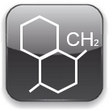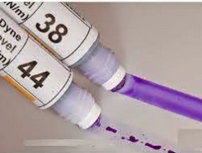Adhesion
Polypedia > Properties of polymers > Physical properties
| Adhesion | ||
The adhesion corresponds to the set of forces or mechanisms that holds the adhesive together with the substrate on which it has been applied, the adhesion term refers to a thin layer (boundary layer) existing between the substrate and the adhesive itself. The phenomenon by which two objects placed in contact, attract each other and have a tendency to remain together, is called adhesion or, if it is two parts of the same body, cohesion. Although it happens in a systematic way, this phenomenon is often not very clear: in most cases, the objects we deal with do not spontaneously adhere, because the intensity of the forces at play is very small. In fact, the adhesion is due to interactions whose range of action is of the order of the intermolecular distances: physical bonds - intermolecular forces - between the surfaces of the bodies in contact and, sometimes, also true chemical bonds between the molecules that belong to different bodies. For two macroscopic objects to adhere with an appreciable intensity, a microscopic contact must be established between them. The mechanical reasons, due to the irregularities of the surface and the impurities that get between the molecules, in the first place the humidity, make this contact difficult to achieve between two solids; On the other hand, some experiments have shown that, if the separation distance falls below a critical value, typically between 1 and 10 nm, they adhere spontaneously. The case is different for a liquid and a solid, among which it is easy to establish a molecular contact that makes the adhesion very intense; The phenomena of capillarity, or the fact that solid wet liquids, are a demonstration of this. For the most part, the adhesives commonly used in industry and in everyday life are in the liquid phase at the time of application and only then do they solidify, precisely because they can adequately wet the substrate and subsequently increase its cohesion. |  | |
Mechanical Adhesion | ||
The adhesive materials fill the voids or pores of the surfaces keeping the surfaces joined by interlocking. There are large-scale forms of sewing, other times on a half-scale such as Velcro and some textile adhesives that work at small scales. It is a method similar to surface tension | ||
| Chemical adhesion | ||
Chemical adhesion occurs when the atoms of the interface of two separate surfaces form ionic, covalent bonds or hydrogen bonds. The strongest bonds occur between atoms where there is permutation (ionic bond) or electrons are shared (covalent bond). A weaker bond occurs when a hydrogen atom that is already part of a particle is attracted by another nitrogen, oxygen or fluorine, in that case we would talk about a hydrogen bridge. |  | |
| Electrostatic adhesion | ||
Some polymer drivers let electrons form a potential difference when they join. This results in a structure similar to a condenser and creates an attractive electrostatic force between materials. |  | |
| Cohesion | ||
Cohesion is the attraction between molecules that holds together the particles of a substance. It is important to understand that cohesion is different from adhesion; Cohesion is the force of attraction between adjacent particles within the same body adhesion is the interaction between the surfaces of different bodies. | ||
| How does the temperature influence the surface tension? | ||
In general, the surface tension decreases with temperature, since the cohesion forces decrease with increasing thermal agitation. The influence of the external environment is due to the fact that the molecules of the medium exert attractive actions on the molecules located on the surface of the liquid, counteracting the actions of the liquid molecules. |  | |
| Wettability | ||
A key feature to obtain a good bond between two polymers is the wettability, that is, the capacity of the molten polymer in the liquid phase to flow and diffuse during the overinjection process. A measure of wettability is the contact angle formed at the junction of a solid and a liquid in a particular environment. In thermodynamic terms, good wettability occurs if there is a net decrease in total free energy when the new interface between the two polymers is formed. | ||
| Test inks | ||
In order to make possible the printing, painting and gluing of particularly "difficult" plastic materials (such as polyolefins and / or certain technopolymers), adequate pretreatment is necessary (for example, with atmospheric pressure or vacuum plasma) so that the surface tension reaches a certain value. The measurement of the surface tension is done by measuring the contact angle of a fluid on the surface of the product or, more quickly and easily, with the use of wetting measurement inks. The measure is necessary: - before painting: water-based paints require a wettability of at least 45 mN / m (dyne) - Before printing: the adhesion of the printing inks requires a wettability of approx. 38 mN / m - Before gluing: at least 42 mN / m - After the treatment to verify that the above parameters have been reached. It must be remembered that a good wettability of the surfaces to be glued, printed and painted is a necessary condition, but not always sufficient, and other factors that may condition adhesion sometimes intervene. We indicate the intrinsic surface tensions of some untreated plastics: Polypropylene 29 mN / m (dyne) Polyethylene 31 Polystyrene 35 Polyamide <37 PBT 34 Silicone 23 PVC 38 PMMA <37 ABS 36 Mexpolimeros supplies inks for the wettability test in packages of 8 bottles of 30 ml, in the standard version from 30,34,38,40,44,46,52,58 mN / m. On request also different gradations. |  |
